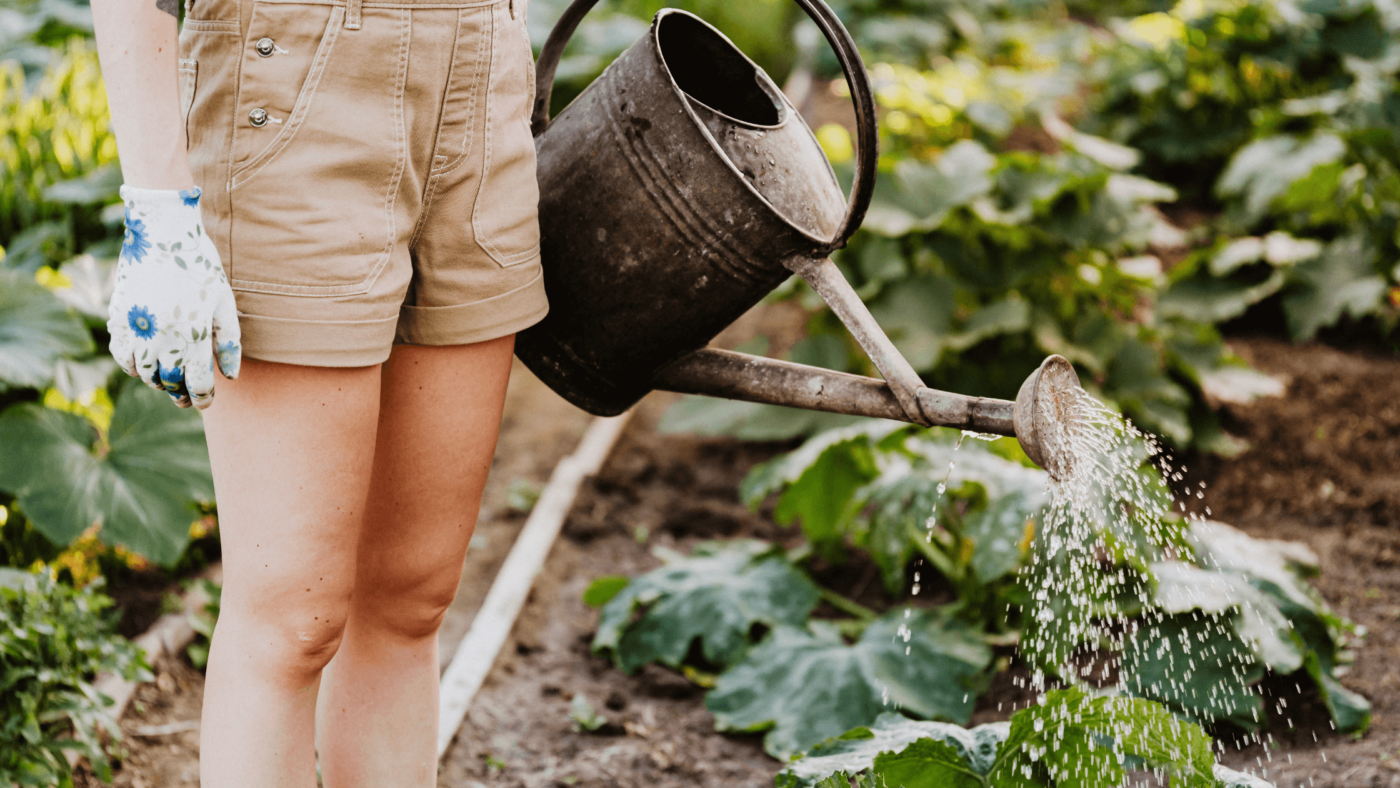Watering is important in keeping your garden plants healthy. But it doesn’t come without its pitfalls. Especially in hot weather, it may seem like you’re not doing your best to keep your garden well-watered. However, knowing how and when to do it can make plant watering easy, while also saving you time and precious water.
When to Water?
First, let us discuss when it is best to water plants. The most recommended time of the day is early morning. The temperatures are relatively cool and as the day begins, so does water consumption. Plants will absorb the necessary water, while any excess will be removed through transpiration. This way, no moisture will be left on the leaves or in the soil to attract garden pests or mildew. Another good time to water is in the evening.
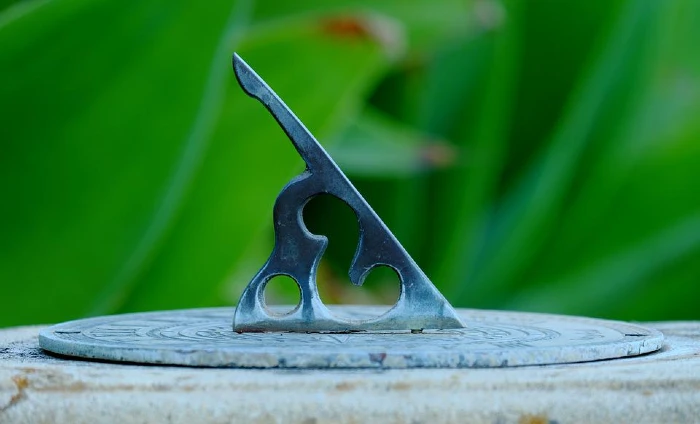
Midday is far from the best time to water plants because too much of the water will be evaporated before the plants can take advantage of it. A common myth states that watering on sunny days causes leaf scorch, but again due to rapid evaporation, that’s not a valid concern.
How Often to Water?
The next important question is how often should plants be watered. While there is no universal rule to follow, there are a few things to take into consideration: weather conditions, type and volume of available soil, and specific plant needs.
Naturally, hot and sunny weather requires more frequent watering. But so does windy weather. Air humidity and rainfall also affect the rate of water use. For example, rain helps, but you shouldn’t rely on light showers as they rarely provide sufficient moisture to actually reach the plant roots.
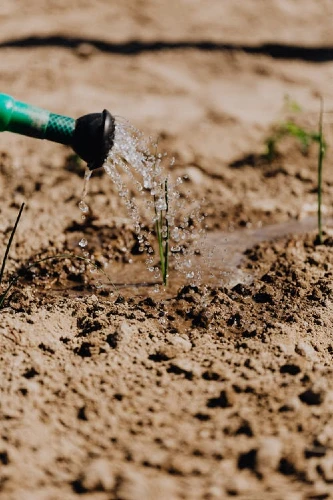
You should also consider the available soil. Plants in containers need much more frequent watering than those planted in raised beds, borders, or gardens. An open location allows roots to grow freely and draw moisture from a wider area. At the same time, restrictions such as walls can create certain limitations for the root system.
Soil type is another major factor. Its texture and structure determine how much water it can hold and how much of it plants are able to extract. For example, clay soil holds a lot of water, but it’s harder to draw out. That’s why the plants can appear to suffer even when the soil feels damp. On the contrary, sandy soil allows plants to extract water more easily, while it may look seemingly dry. A good way to check moisture levels is by sticking your fingers or a wooden dowel a few inches into the soil. If the dowel comes out clean, that means it’s time to water.
As for plant needs, those depend on plant size, species, and growth stage. Larger plants and those with more leaves need more water due to increased consumption and evaporation. And how often should you water new plants? Water them daily in the first week or two, then decrease to 2-3 times per week (unless it rains). Due to their smaller size, recently planted roots only absorb moisture from a small area.
Continue reading to learn the watering needs for different plant types or species.
Watering tips for different types of plants in the garden:
Plants to water every day or two
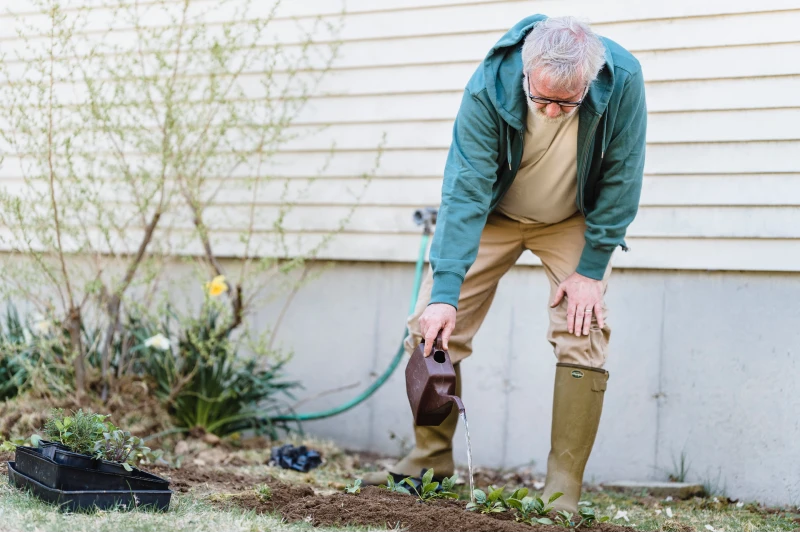
Seedlings, cuttings, and young plants require daily watering. The same goes for those that have been recently planted. Tomatoes and cucumbers planted in greenhouses also need daily watering. Water little and often as opposed to drenching the plants. Watch out for signs of over-watered tomato plants such as cracked fruit and blisters on the lower leaves. Although cucumbers love moisture, signs of waterlogging may include yellow leaves.
Plants to water once a week
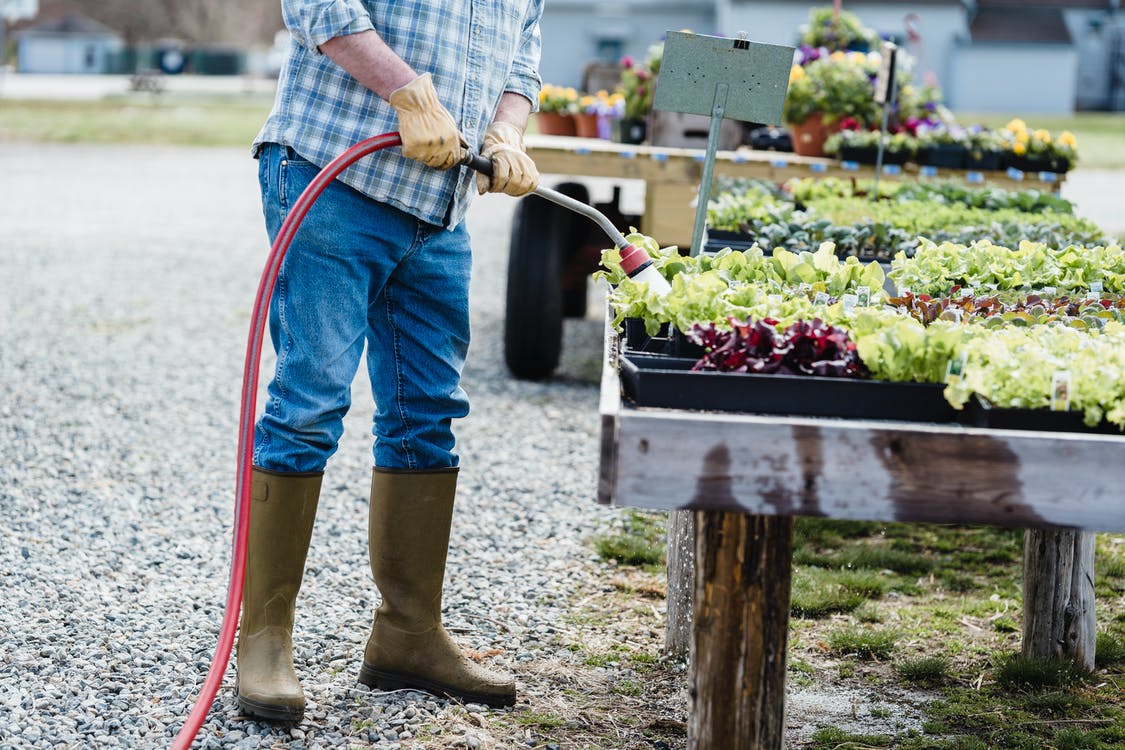
These include plants with shallow root systems such as bedding plants, as well as moisture-loving perennials and hydrangeas. Veggies such as lettuce, spinach, celery, and brassicas also fall in this category.
Plants to water once a fortnight
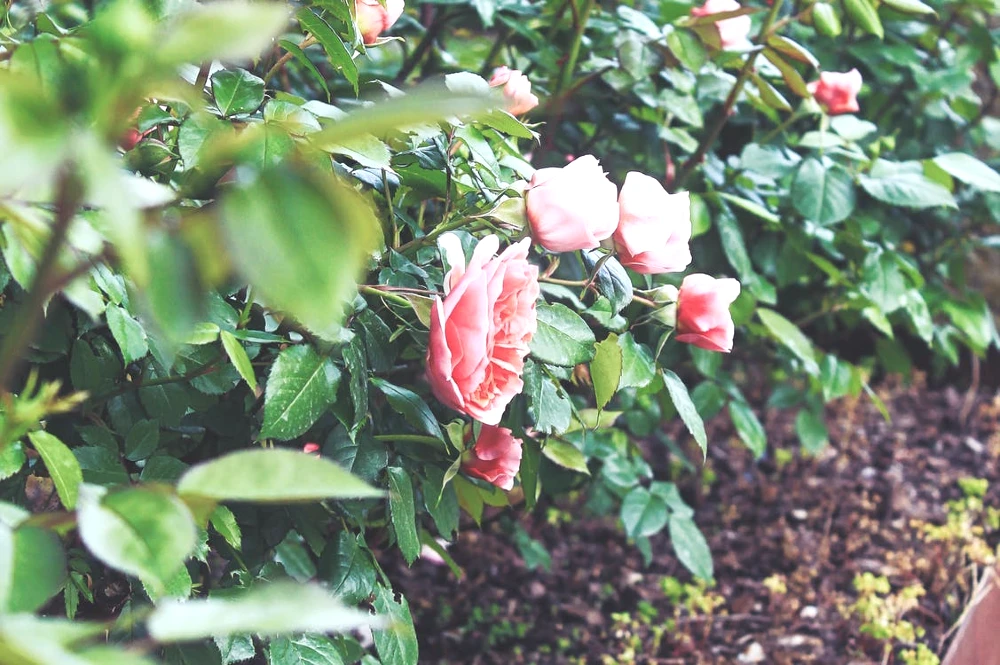
When the weather is dry, water roses, Clematis, as well as Eupatorium and Irises ensata and siberica. The same goes for shrubs with shallow roots such as camellias.
Plants to avoid watering
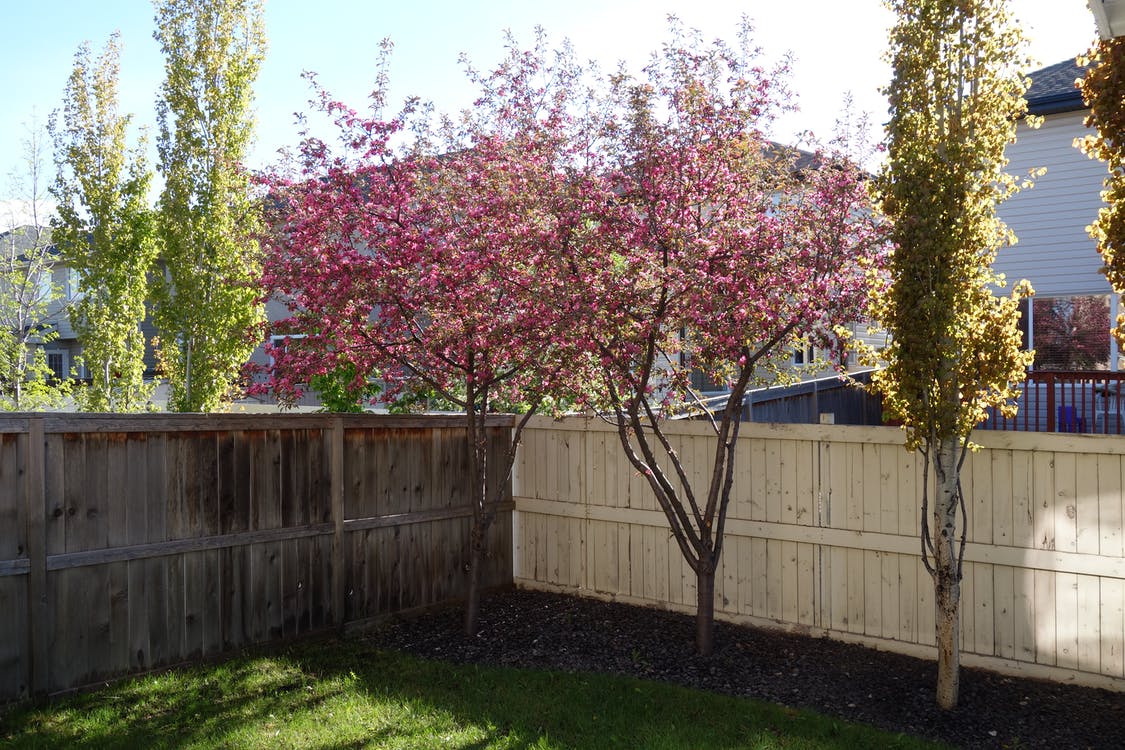
Mature trees, shrubs, and hedges don’t require watering. And some species simply thrive in dry soil. But how long can these plants go without water? In truth, they don’t need any additional watering at all. For example, you don’t need to water your Verbascum and periwinkle. Cordylines are also drought-tolerant. Succulents like Aeoniums and Agave are great at storing moisture in their leaves.
Signs that your plants may need more frequent watering
- Slow growth or low production of fruit or flowers
- Dull-looking leaves or stems that possibly appear darker or paler than their normal colour
- Leaves are pointing downwards or starting to curl
- Wilting (but do keep in mind this can be a sign of overwatering too)
- Pots are lighter than usual
- Pots get knocked over by the wind
- Signs of powdery mildew due to stress caused from drying-out
Watering Application Tips
Here are some useful tips on watering plants that can facilitate plant care and ease your concerns:
- Water less often but more thoroughly. This will allow the water to reach the roots. Frequent light waterings will encourage plant roots to only grow towards the soil surface and become vulnerable.
- Water in the morning or the evening so that less water evaporates.
- Water evenly around the plant to promote healthy root growth in all directions.
- Water slowly to allow the water to infiltrate the soil as opposed to running off.
- Water the soil by directing the water towards the base of the stem. Avoid keeping leaves wet for prolonged periods as this makes them susceptible to disease.
- When in pots, how much water do plants need? Water potted plants until the water flows through the bottom of the pot to make sure you’ve provided enough.
- Avoid keeping the soil very wet all the time (waterlogging). The roots of over-watered plants are deprived of the oxygen they need.
- Apply mulch to the soil surrounding your plants to promote moisture retention.
- Focus on soil quality. Use soil that provides good water retention and drainage properties.
Pro Tip: Water hardness determines how well plants can absorb added nutrients. The mains water in many parts of the UK has high levels of hardness, which can cause a nutrient lockout. Keep that in mind when selecting suitable fertilisers for your garden. There are products specifically designed to effectively deliver nutrients in hard water areas.
Methods of Watering
There are different methods of watering plants and each has its pros and cons. Some of the possibilities include:
- Soak-up tray – Generally used when sowing seeds. You can place your seed tray in a tray filled with water to wet the soil, but only for several hours at a time.
- Watering cans with rose or without rose – Watering cans with a rose can be used for young seedlings to make sure the water is gentle enough. (Hand sprayers can also be used for this purpose to create a fine mist.) Watering cans without a rose are probably the most widely used watering method and have a wide range of applications. They are great at directing the water flow in the ideal direction but are more time-consuming.
- Hose with lance or spray gun – Providing a heavier flow than water cans, this method saves time and creates a rain-like effect. A lance allows you to reach hanging baskets, for example.
- Hose without a lance or spray gun – Another very common method to provide mature plants with plenty of water. Some gardeners kink the end of the hose or use their thumb to control water flow.
- Self-watering pots and containers – These provide consistent levels of moisture to plants and can be perfect for many vegetables, herbs, as well as annuals and perennials. They also work great when you travel frequently or have pots in places that are hard to reach.
- Trickle or drip irrigation – This involves hoses with small holes in them (emitters) that are interconnected and drip water into the soil. This is an efficient method as it delivers the water closer to plant roots while saving water as well.
- Seep irrigation – It involves a porous soaker hose that seeps water throughout its length.
- Sprinkler – Sprinklers are great at covering large areas such as lawns. However, they’re not efficient for trees, shrubs, and hedges and can waste too much water. They also need mains pressure and electricity to operate.
- Automated irrigation systems – These systems can include any combination of drip irrigation and sprinklers, combined with a timer to start and stop the water supply. They are ideal for larger areas and minimize manual labour. However, keep in mind that a change in weather conditions such as excessive rain or drought may require timing adjustments.

Tips for economical watering
Besides some of the tips above, there are additional ways to conserve water in your garden:
- An excellent way to save water is by switching to rainwater instead of mains water. Install a water butt to store rainwater and use it during dry spells. You can then fill up watering cans or pressure sprayers. Keep your water containers covered.
- Add homemade compost or organic matter for healthy soil and to reduce your garden’s thirst.
- Place drip trays beneath pots to collect drainage, particularly in warm weather.
- Choose the right plants for the right spots depending on soil properties, sun exposure, etc.
- Use permeable paving rather than hard landscaping to reduce flooding, while also allowing water to reach the soil.
- You can even occasionally use grey water (from baths or washing up), especially if you use ecologically friendly detergents.
Plant watering can be made easy if you follow an appropriate guide to watering plants based on your local climate, soil, and plant needs. We hope the tips above will help you keep your garden happy and healthy while conserving water in the meantime.

